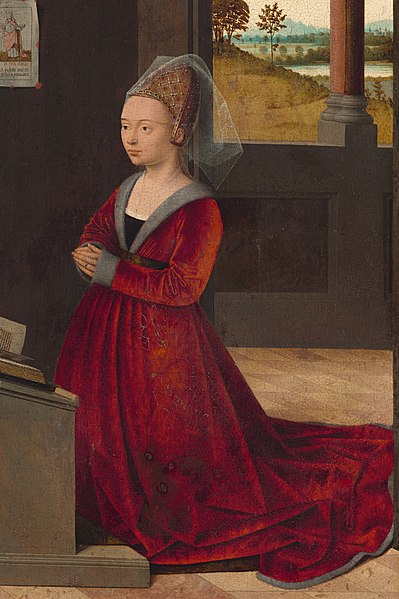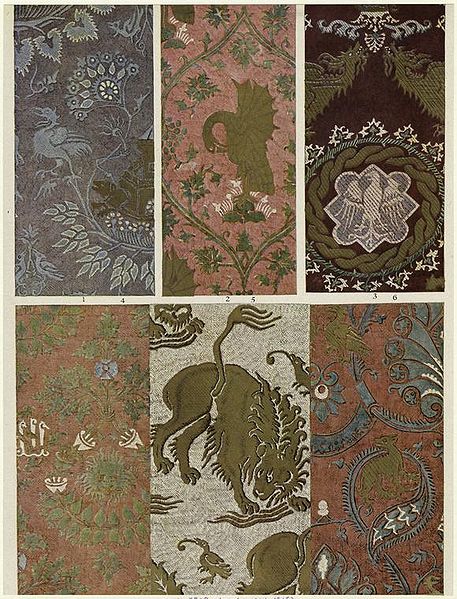1400–1500 in European fashion
Fashion in 15th-century Europe was characterized by a series of extremes and extravagances, from the voluminous robes called houppelandes with their sweeping floor-length sleeves to the revealing doublets and hose of Renaissance Italy. Hats, hoods, and other headdresses assumed increasing importance, and were draped, jeweled, and feathered.
Full-bodied houppelandes with voluminous sleeves worn with elaborate headdresses are characteristic of the earlier 15th century. Detail from Très Riches Heures du Duc de Berry.
Young Italian men wear brimless caps, The Betrothal, c. 1470
Bold pomegranate- or artichoke-patterned silks are characteristic of the 15th century, as are richly coloured velvets and woolens. Fine linen was important for headdresses and for the shirts and chemises revealed by new lower necklines and slashing.
A fur-trimmed Burgundian gown of the mid-15th century has a V-neck that displays the black kirtle and a band of the chemise. Hair is pulled back in an embroidered hennin and covered by a short veil.
1300–1400 in European fashion
Fashion in fourteenth-century Europe was marked by the beginning of a period of experimentation with different forms of clothing. Costume historian James Laver suggests that the mid-14th century marks the emergence of recognizable "fashion" in clothing, in which Fernand Braudel concurs. The draped garments and straight seams of previous centuries were replaced by curved seams and the beginnings of tailoring, which allowed clothing to more closely fit the human form. Also, the use of lacing and buttons allowed a more snug fit to clothing.
Clothing of the first half of the 14th century is depicted in the Codex Manesse. In the lower panel, the man is dressed as a pilgrim on the Way of St James with the requisite staff, scrip or shoulder bag, and cockle shells on his hat. The lady wears a blue cloak lined in vair, or squirrel, fur
The young Richard II of England, kneeling, wears a houppelande of silk brocade with the badge of his livery. St John the Baptist wears his iconographical clothes, but the sainted English kings Edward the Confessor and Edmund the Martyr are in contemporary royal dress. The Wilton Diptych 1395–99
Mary de Bohun wears an ermine-lined mantle tied with red strings. Her servant wears a mi-parti tunic. From an English psalter, 1380–85
14th-century Italian silk damasks








